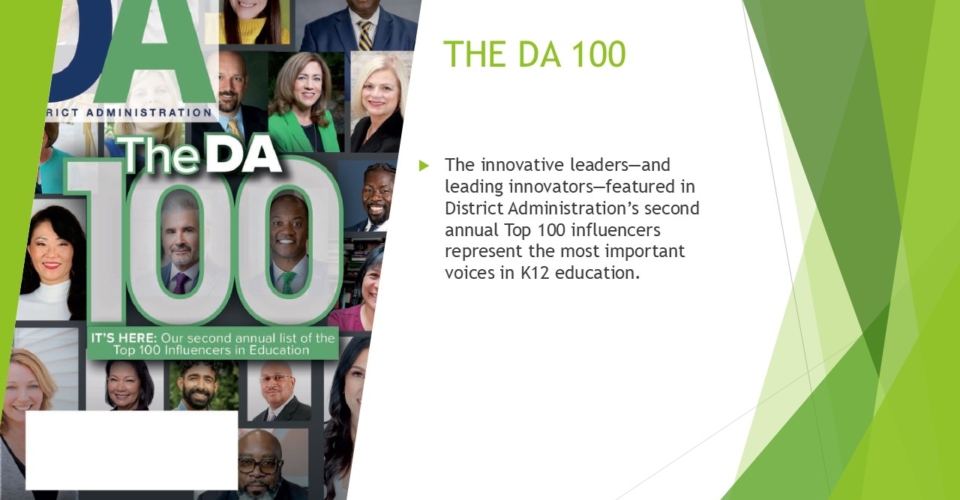In education, we often talk about seasons… back-to-school season, testing season, graduation season, but we rarely talk about the seasons of leadership.
And yet, for those of us who sit in the superintendent’s chair, the year is not a straight line. It is a series of cycles, each with its own tempo, tone and tension.
This article is meant as a reflection and a guide, particularly for superintendents to share with their boards, communities and colleagues. If we want stronger partnerships between governance and administration, it helps to understand the rhythms that shape a superintendent’s year.
Because while the work may look constant from the outside, from the inside it moves in seasons.
Launch season (August–September)
The school year begins not with a whisper, but with a roar. This is the season of presence, of showing up, shaking hands and standing shoulder to shoulder with the people who make our schools run.
Superintendents spend the first six to eight weeks of the year fully immersed in campuses, community events, athletic games, drop-offs and walkthroughs. During this season, there are no substitutes for visibility. Trust is built by proximity.
That means board communication may be lighter. Emails might take longer to return. It’s not a sign of disengagement, it’s a sign of immersion. The superintendent is in the field, leading not from behind a desk, but from the front lines of classrooms and cafeterias.
Planning season (October–January)
As the dust of launch begins to settle, this season becomes the superintendent’s most strategic window. It is time to step back, scan the system and reflect on what’s working and what’s not.
Mid-year academic data starts to roll in. Strategic goals are revisited. Long-range plans begin to take shape.
This is a generative season, a time of deep thinking and systemwide alignment. The superintendent is often most available for big-picture conversations, community input and thoughtful visioning.
It’s also when leadership teams begin preparing for what’s ahead: staffing conversations, resource needs, legislative forecasting and evaluation cycles.
Budget season (February–April)
Few things reveal a district’s priorities like its budget. During this season, the superintendent shifts gears into technical leadership. Every decision is a balancing act: between needs and resources, between legal mandates and local values, between what’s urgent and what’s strategic.
This is when budget presentations become weekly rituals. Staffing proposals are developed. Tradeoffs become visible. Legislative updates come fast and furious. And the superintendent is at the heart of every conversation about sustainability and strategy.
To an outside observer, this season may seem dominated by numbers, but behind every line item is a student, a classroom and a decision about what kind of district we want to be.
Transition season (May–June)
The end of the school year is both celebratory and bittersweet. It’s a season of transition for students, for staff and for leadership teams.
Superintendents spend this time attending dozens of graduations, award ceremonies and retirement events, while also leading evaluations, planning summer learning, finalizing staffing decisions and preparing for the next launch.
This is often the most emotionally intense time of year. We celebrate growth while quietly mourning departures. We wrap up one chapter even as we script the next.
And amidst all of it, we continue showing up, because these moments matter. They remind us why we do this work in the first place.
Respite season (July and Small Gaps Between)
The superintendent calendar rarely pauses, but there are short windows when the pace slows just enough for reflection. July, and a few key breaks throughout the year, offer brief moments of rest and reset.
This is when we take a breath. Read. Recharge. Reflect on lessons learned. Reconnect with family and reimagine what’s possible for the year ahead.
Ironically, this is also one of the best times for strategic conversation. With space to think, superintendents are often at their most open and expansive. Visioning retreats, long-term planning or deep-dive conversations with board members often happen during these quieter times.
It’s not time off. It’s time in. Time to re-center and refocus before the next season begins.
Closing thoughts: Synchronized leadership
Misunderstandings often arise not from misalignment of values but from mismatched expectations. What’s helpful in one season might feel overwhelming in another. What’s needed in one month may be unhelpful the next.
The more we understand the natural rhythms of the superintendency, the better we can lead—together. Great governance is not about constant engagement. It’s about synchronized engagement; knowing when to press in, when to step back and when to plan forward.
So the next time you wonder why your superintendent seems hard to reach, or why they suddenly have more time for strategy, consider this: Just as you wouldn’t ask a farmer to plant in winter, let’s be thoughtful about when we expect our superintendents to sow, tend and harvest.



